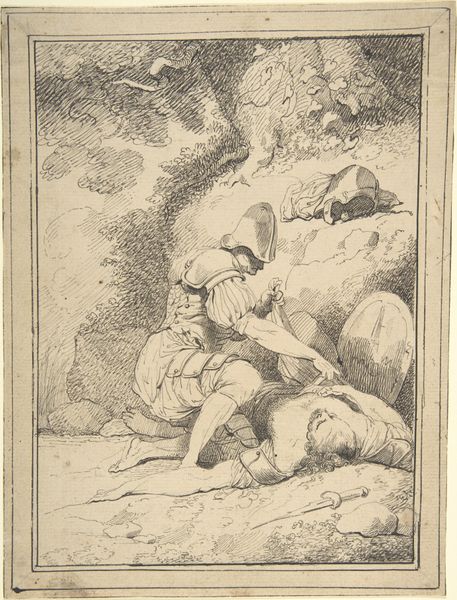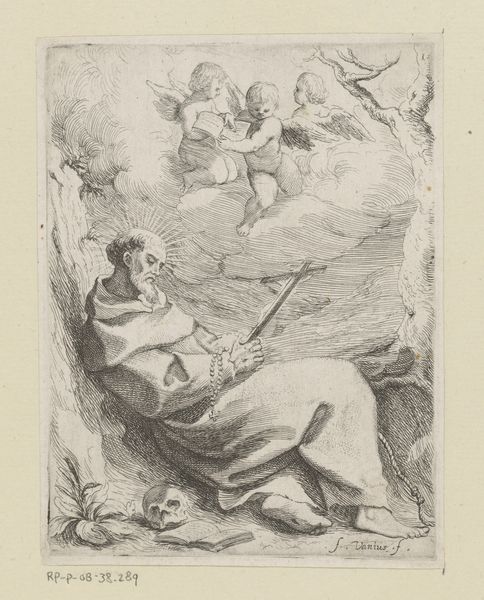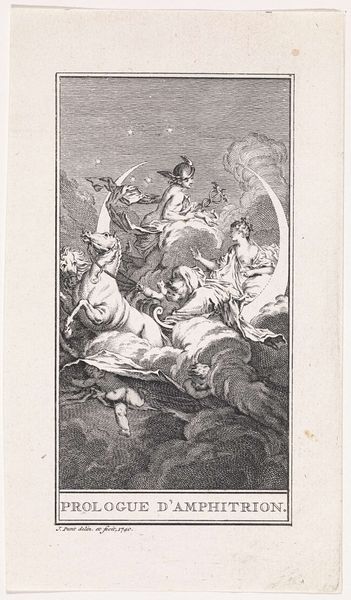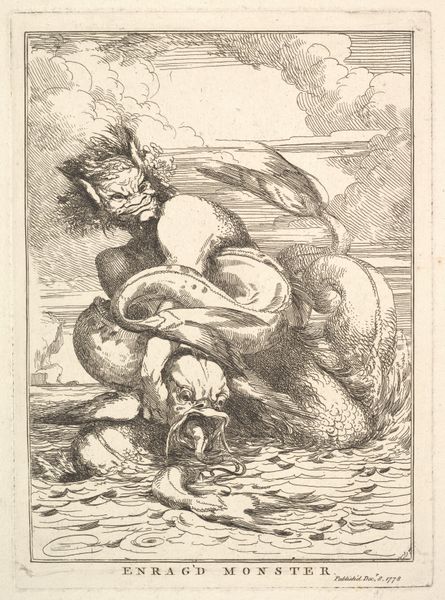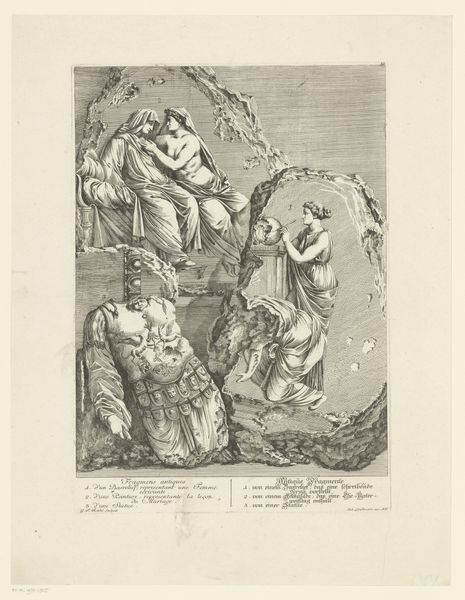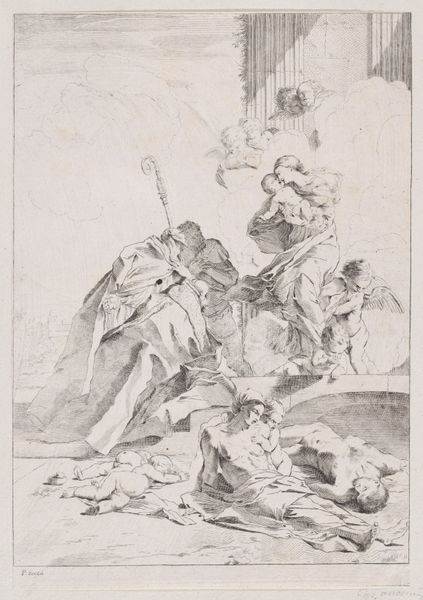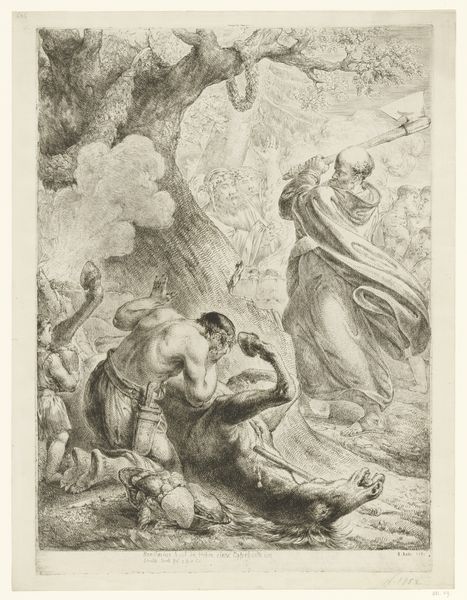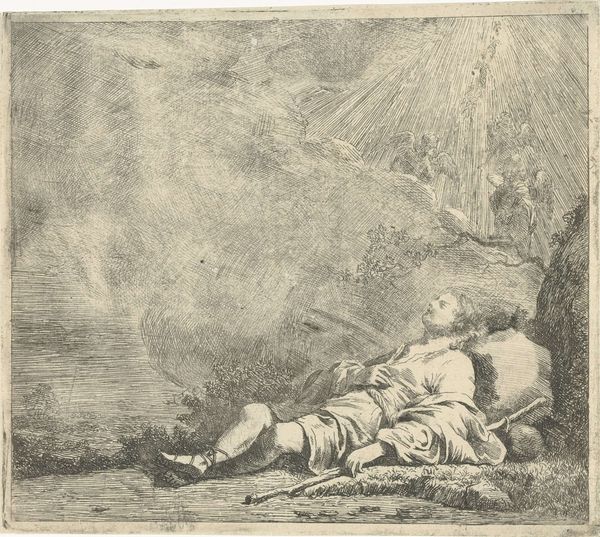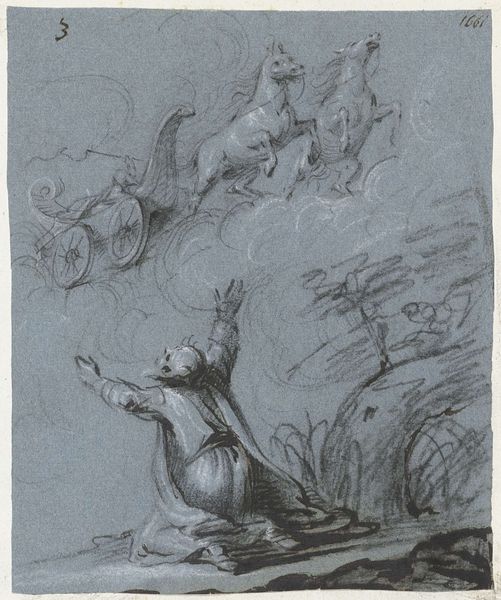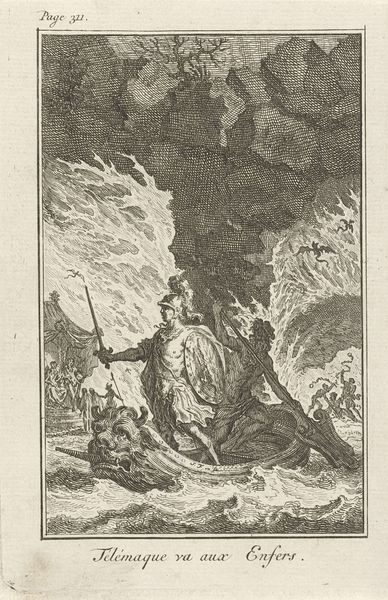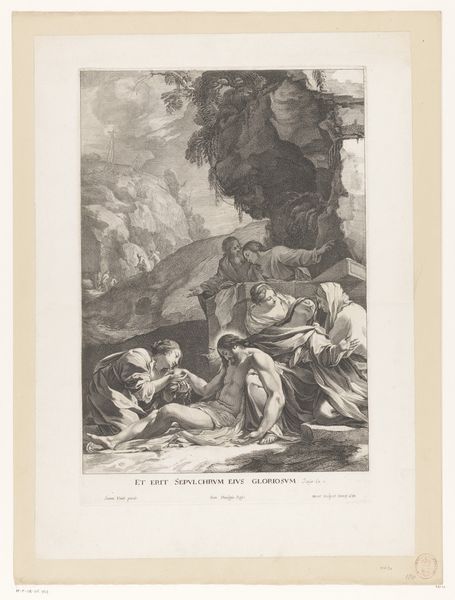
Dimensions: Plate: 9 5/16 x 6 7/8 in. (23.6 x 17.4 cm) Sheet: 15 7/16 x 10 7/8 in. (39.2 x 27.6 cm)
Copyright: Public Domain
Robert Blyth etched "Stripping the Slain" in the late 18th century. A fallen warrior lies prone, his armor discarded, while his conqueror kneels to strip him of valuables, a stark tableau of the spoils of war. Consider the sword at the slain warrior's side—a symbol of power and honor now rendered useless in death. This image echoes through time, recalling ancient Greek depictions of Achilles dragging Hector's body, or even the Old Testament accounts of victors plundering the defeated. The act of stripping the slain transcends mere practicality. It is a primal assertion of dominance, a desecration of the vanquished. This motif appears across cultures, from medieval tapestries to modern cinema, each instance imbued with a blend of triumph and morbid violation. The emotional resonance of this scene lies in its raw depiction of human conflict, where victory is often won at a terrible cost, engaging viewers on a subconscious level with our long history of violence and conquest.
Comments
No comments
Be the first to comment and join the conversation on the ultimate creative platform.
